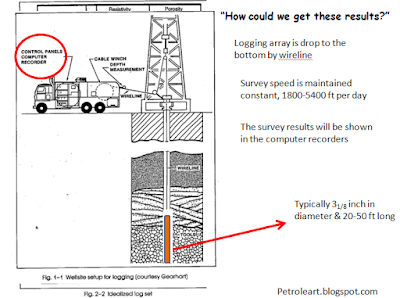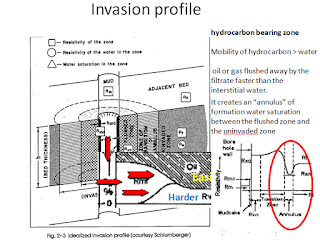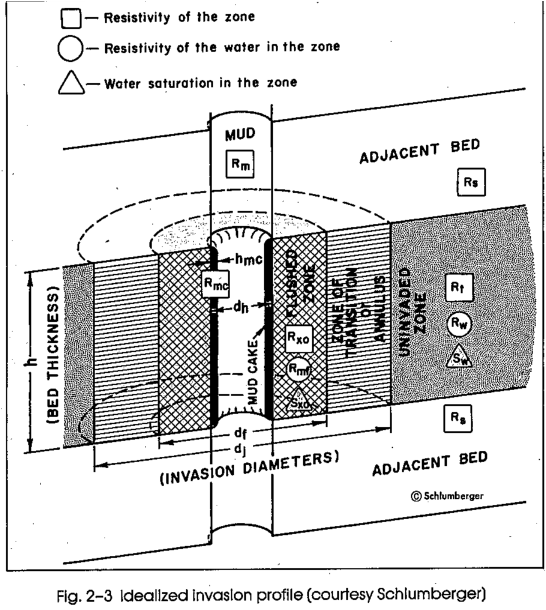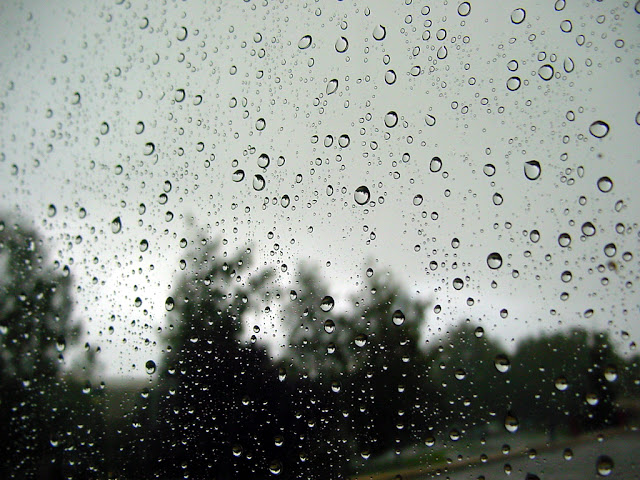Well Logging Procedure Overview
This post is an elaboration of the "Basic Logging Interpretation" slide which I share in my previous post [CLICK HERE]. This explanation will fit the best if you want to present the "Basic Logging Interpretation" slide at page 4
Well logging is an important job in Oil and Gas
industry. It uses sophisticated tools,
equipments, devices and software, The interpretation will be done by professional
earth scientists with precision as it is very important in formation
evaluation. That is why there are many trainings, seminars and handbooks of
well logging, which are reasonably high in price, to make sure people
contributing in well logging jobs are capable in using the software and basic
procedure to get the representative results of the formation. The slide ppt
(ppsx) of basic interpretation in well log results has been shown in this blog,
but to elaborate it, we should know the tools, procedures, and simple facts in
the field that is important to get the best results.
Why we need Well
Logging?
Indeed. It provides many information of the formation near
the well. It will allow us to see changes in formation properties along the well.
But it also has its shortcomings too. The biggest short coming is that the
measurement is representative only to the rocks some feet around the well. That
means we will have no clue if in 20 ft near the wellbore, the rock and fluid
properties have changed. That is why the result is quite unrepresentative in
the non-homogenous zone.
So, what are the
tools?
There are many logging tools that are used based on whether
they are active or passive, and based on the properties they measure. The tools
should be chosen based on the condition of the well, and the most important
one, economical consideration. It’s all about money after all. The more
equipment we use will cost more money. The longer we use the tools, the more we
pay the rig (exploration rig, offshore rig and bigger rig will cost higher
money. Exploration rig may cost $8000-15000 per day!). The type of well will impact on the
economical consideration too. Horizontal well will cost higher since the tool
can’t be lower by wireline (should use pipe-conveyed logging), deep well will
cost higher because the tools should be modified to resist the high pressure,
and hot well (e.g. geothermal well) will cost higher because the tools should have
high temperature design.
The active well log will emit electromagnetic, nuclear, or
acoustic to the formation, then measure the respond to get the formation
properties. For example, in Acoustic log, the logging tool will emanate acoustic
and see the respond from the formation. The sound might travel through rock depends
on the matrix’s physical structure. So, when the respond come to the acoustic
receiver, the amplitude, speed and phase are function of all of the combined
matrix densities, interconnections, cementation, fracturing, and porosities
within the matrix.
The passive well log will respond to the conditions of the
rock as the sources to measure the properties. They may respond to Natural
gamma ray emitted by the formation (gamma ray log), spontaneous potential difference
of formation and reference (SP log), and changes in borehole size (caliper
log).
How do they work?
The well logging companies will operates the logging trucks
with computer programs and software to gather the measurement data from the
logging tool in real time. The wireline/cable is made of conductor material
with outer armor to protect the cable from borehole conditions. As the measurement
continue, the cable winch on the truck will be rolled and the measuring tool will
move upward, creating the measurement along the wellbore depth. The data either
recorded in the truck or transmitted directly from the wellsite to the office. The
accuracy of the result also depend on the speed of the logging tools, as the
faster upward movement of the logging tools, the result will less accurate.
Those are some overview of well logging job. It needs
special persons who understand the fundamental of oil logging to give the
correct interpretation, as the logging interpretation quite subjective, depend
on experience, proficiency, and care of observer in interpreting the data. The well
logging result analysis of every companies will also varies based on their
own criteria, programs and experiences. But over all. the safety and economic
should be the real consideration since the logging tools have radiation safety
issue and need special training, also the cost of data misinterpretation will
be greater than the cost of hiring major experienced logging service company.
Please Kindly message in this post for the download link
Do you love this post? Thank you! I feel appreciated. This post is under the category of Petroleum Engineering, you may love to see other similar posts HERE
Do you love this post? Thank you! I feel appreciated. This post is under the category of Petroleum Engineering, you may love to see other similar posts HERE








Comments
Post a Comment